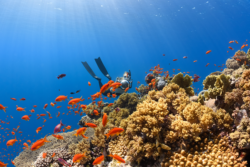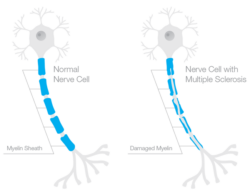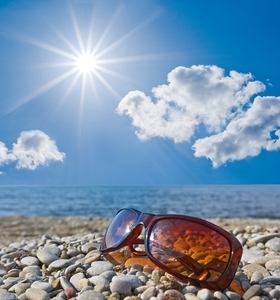Cancer is a word that strikes fear in most. We’re a society concerned with taking preventative measures to avoid getting “The Big C.” We know to use sunscreen when outdoors and chow down on “super foods” rich in antioxidants and phytochemicals to help lower our cancer risk. The antioxidants found naturally in foods can counter free radicals that are produced in our bodies from exposure to environmental toxins and carcinogens such as tobacco smoke and radiation – except when they are covered in toxins that limit their antioxidant capabilities.
Strawberries are well known as a super food, rich in the antioxidants vitamin C, ellagic acid and flavonoids that suppress a DNA-damaging enzyme linked to lung cancer. Strawberries are 98-99% water, making them the perfect sponges for all the goodness that Mother Nature provides… that is, until Man mucks things up. The primary pesticide used on U.S. strawberry farms, methyl bromide, is highly carcinogenic and toxic to the central nervous system. Pesticides serve to protect strawberries from damage by insects, fungus, rodents and disease, but the sad truth is we would be better off eating a strawberry covered in insects than one that is literally a pesticide-soaked sponge. In some cases, the use of sunscreen is very similar to the use of pesticides on strawberries, in which the chemicals used to block the sun’s radiation, may do more harm than good. Let me explain.
The Sunscreen Smokescreen
Previously, I wrote about tanning basics and the benefits of sunscreen. I’m lucky to live in a coastal town where there is much to do outdoors; beach, hiking, taking our workouts outdoors, and leisurely drives with the top down. My fellow health fanatics and I know to use sunscreen to protect ourselves from the sun’s damaging rays, but more importantly, we know that not all sunscreens are created equal. There are some that actually contain cancer-causing ingredients, resulting in the exact scenario we’re trying so diligently to prevent… similar to our strawberry sponge. Like the strawberry we’re made up of mostly water, up to 60% in the average adult body. Like the strawberry we absorb our environment into our systems, for better or worse.
Clearing the Smokescreen
The Environmental Working Group (EWG) is the nation’s leading environmental health research and advocacy organization on a mission to provide consumers with no-fluff facts to make healthier choices. EWG offers nine surprising facts about sunscreens which we would be wise to heed. Ultimately, we just want to know which sunscreens are best for us:
Bigger isn’t always better. High sun protection factor (SPF) products tempt us to apply too little sunscreen and stay in the sun too long. The FDA has proposed prohibiting sunscreen sales with SPF values greater than 50+ as they are “inherently misleading,” but there is no current regulation that carries the force of law. According to the Skin Cancer Foundation, most sunscreens with an SPF of 15 or higher do an excellent job of protecting against UVB. It’s also important to note that SPF refers only to protection against UVB radiation (responsible for sunburns), but SPF has no bearing on UVA rays, the beast which penetrates deep skin layers. Wise consumers need to read the label for products that offer both UVA and UBV ray protection.
Grade A fail. Vitamin A is a well known antioxidant that slows skin aging, and is a common sunscreen additive. Nearly one-quarter of all sunscreens contain vitamin A (often labeled as “retinyl palmitate” or “retinol”), but studies indicate that vitamin A may speed the development of skin tumors and lesions when applied to skin in the presence of sunlight. EWG recommends that consumers avoid sunscreens, lip products and skin lotions containing vitamin A.
Disruption junction. Some sunscreen ingredients disrupt hormones and cause skin allergies. Our current choices are either chemical or mineral sunscreens:
- Chemical sunscreens have inferior stability, penetrate the skin and may disrupt our hormone system. Benzophenone-3 is labeled as oxybenzone, a common sunscreen ingredient which penetrates the skin, is absorbed into our bloodstream and acts like estrogen in the body. In fact, it mimics estrogen even more so than bisphenol-A (BPA), a chemical found in certain plastics that has received much attention lately for its toxic effects. Oxybenzone can trigger allergic reactions, and preliminary data connect higher oxybenzone blood concentrations with significant female health issues. While the cause of endometriosis is not known, estrogen fuels this painful condition. A study published in Environmental Science & Technology in 2012 links oxybenzone to endometriosis in older women, while another 2008 study by the Centers for Disease Control and Prevention (CDC) found that women with higher oxybenzone blood levels during pregnancy had lower birth weight daughters.
- Mineral sunscreens consist of zinc and titanium dioxide, often “micronized” or in nano-particles. Manufacturers micronized particles to help reduce or eliminate the chalky white tint that minerals leave on the skin, but this comes with a trade-off. The smaller the particles, the better the SPF protection BUT at a cost to UVA protection.
If you can breathe it in, don’t buy it. Loose powder cosmetics with sunscreen properties, intended for the face and scalp, often contain tiny particles of zinc and titanium that offer strong UV protection by sticking to the skin. The problem arises when loose powder ends up in our lungs when we breathe in loose airborne particles. The International Agency for Research on Cancer classifies inhaled titanium dioxide as “possibly carcinogenic to humans.” Current FDA over-the-counter rules prohibit loose powders to advertise an SPF or make claims of sun protection, but small companies currently have a grace period to remove powders from the market. Sprays sunscreens are popular due to their convenience, but there’s growing concern of their inhalation risk. Sprays are also hit or miss, leaving areas exposed without protection.
Say bug off to bug repellents. Sunscreen and bug repellent combos may seem like a great idea, but the risks outweigh the benefits as repellents typically contain chemicals such as DEET (also listed on labels as N, N-Diethyl-m-toluamide or N, N-Diethyl-3-Methyl benzamide). DEET is a highly effective repellent, but is also littered with health concerns ranging from topical irritations to lethargy, confusion, disorientation and mood swings. It’s also an environmental toxin that breaks down slowly in soil, with detrimental effects coursing through waterways to all living things. There are also studies that show combining sunscreen and repellents lead to increased skin absorption of the repellent ingredients, which is discouraged for health reasons.
Towelettes are for eating fried chicken. Sunscreen wipes and towelettes were prohibited in 2011 by the FDA due to concerns that there wasn’t enough sunscreen to ensure skin protection. Keep in mind that small companies have a grace period to remove them from their product lines, so just because you see something for sale doesn’t mean it’s good for you.
Tanning Oil + SPF = Oxymoron. Some tanning oils appear to be a healthy choice because they contain SPF protection; however, the SPF levels are typically low and offer no true protection. Bottom line, tanning results from cellular DNA damage which leads to skin cancer.
All that said, the sun isn’t taboo. Don’t go running from it to hide in dark shady spots. Sunlight is critical for our bodies to produce vitamin D, which is important in strengthening bones and the immune system, reducing the risk of breast, colon, kidney and ovarian cancers, and perhaps other disorders. Life is short. Enjoy it… but enjoy it wisely.
This was posted previously June 2013.






